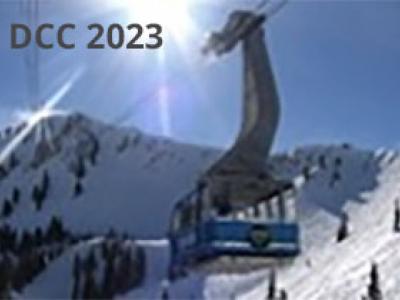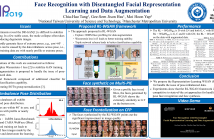
- Read more about TD-GPT: Target Protein-Specific Drug Molecule Generation GPT
- Log in to post comments
Drug discovery faces challenges due to the vast chemical space and complex drug-target interactions. This paper proposes a novel deep learning framework TD-GPT for targeted drug molecule generation. TD-GPT comprises a linear Transformer for drug-target affinity prediction, an affinity-enhanced protein encoder using sequences, and a target-specific attention module in the molecular Transformer decoder. Experiments demonstrate TD-GPT’s efficiency in generating valid, novel molecules with high affinity and specificity for desired targets without target fine-tuning.
- Categories:
 45 Views
45 Views
- Read more about DE NOVO MOLECULE GENERATION WITH GRAPH LATENT DIFFUSION MODEL
- Log in to post comments
De novo generation of molecules is a crucial task in drug discovery. The blossom of deep learning-based generative models, especially diffusion models, has brought forth promising advancements in de novo drug design by finding optimal molecules in a directed manner. However, due to the complexity of chemical space, existing approaches can only generate extremely small molecules. In this study, we propose a Graph Latent Diffusion Model (GLDM) that operates a diffusion model in the latent space modeled by a pretrained autoencoder.
- Categories:
 35 Views
35 Views
- Read more about MULTITASK CLASSIFICATION OF ANTIMICROBIAL PEPTIDES FOR SIMULTANEOUS ASSESSMENT OF ANTIMICROBIAL PROPERTY AND STRUCTURAL FOLD
- Log in to post comments
Antimicrobial peptides (AMPs) play a significant role in guiding drug design, advancing targeted therapies, and cancer treatment research. The function of peptides is highly associated with their three-dimensional structure. AMPs particularly favor alpha-helical structures, or alpha-folds, due to their ability to disrupt the protective layers that surround cells effectively and their structural stability. Existing classifiers mainly identify AMPs but overlook their structural fold which can provide valuable insights into their function.
- Categories:
 5 Views
5 Views
- Read more about A Property-Guided Diffusion Model for Generating Molecular Graphs
- Log in to post comments
Inverse molecular generation is an essential task for drug discovery, and generative models offer a very promising avenue, especially when diffusion models are used. Despite their great success, existing methods are inherently limited by the lack of a semantic latent space that can not be navigated and perform targeted exploration to generate molecules with desired properties.
竖版-mcs.pdf
icassp.pptx
- Categories:
 49 Views
49 Views- Read more about CLINICAL SCORES PREDICTION AND MEDICATION ADJUSTMENT FOR COURSE OF PARKINSON’S DISEASE
- Log in to post comments
Parkinson’s Disease (PD) is the second most prevalent neurodegenerative disorder worldwide, characterized by progressive motor and non-motor symptoms. Unfortunately, there are no definitive PD modifying therapies, so accurate course prediction in advance and appropriate medical adjustment are essential to slow down degenerative process from onset. This work addresses a novel challenge in PD course prediction specifically at month 60 (m60) of both motor and non-motor indicator utilizing Magnetic Resonance Imaging (MRI) and demographic data of previous years.
- Categories:
 20 Views
20 Views
- Read more about FM-Directories: Extending the Burrows-Wheeler Transform for String Labeled Vertex Graphs of (Almost) Arbitrary Topology
- Log in to post comments
We introduce an extension of the Burrows-Wheeler transform supporting exact pattern matching on a string graph $G(V,E,N)$ and yielding polynomial time queries.
- Categories:
 17 Views
17 Views
- Read more about MUSIC IDENTIFICATION USING BRAIN RESPONSES TO INITIAL SNIPPETS
- Log in to post comments
Naturalistic music typically contains repetitive musical patterns that are present throughout the song. These patterns form a signature, enabling effortless song recognition. We investigate whether neural responses corresponding to these repetitive patterns also serve as a signature, enabling recognition of later song segments on learning initial segments. We examine EEG encoding of naturalistic musical patterns employing the NMED-T and MUSIN-G datasets.
- Categories:
 20 Views
20 Views
- Read more about Minimal Adversarial Perturbations in Mobile Health Applications: The Epileptic Brain Activity Case Study
- Log in to post comments
Today, the security of wearable and mobile-health technologies represents one of the main challenges in the Internet of Things (IoT) era. Adversarial manipulation of sensitive health-related information, e.g., if such information is used for prescribing medicine, may have irreversible consequences involving patients' lives.
- Categories:
 21 Views
21 Views
- Read more about DEEP MATRIX COMPLETION ON GRAPHS: APPLICATION IN DRUG TARGET INTERACTION PREDICTION
- Log in to post comments
- Categories:
 9 Views
9 Views
- Read more about Face Recognition with Disentangled Facial Representation Learning and Data Augmentation
- Log in to post comments
We address two issues for tackling face recognition across pose, one is disentangled representation learning and the other is training data augmentation. To have better training properties, we propose the Representation-Learning Wasserstein-GAN (RL-WGAN) with three component networks for learning the disentangled facial representation. As the learning based on imbalanced data often leads to biased estimation, we proposed a data augmentation scheme that exploits the 3D Morphable Model (3DMM) for generating faces of desired poses.
- Categories:
 69 Views
69 Views